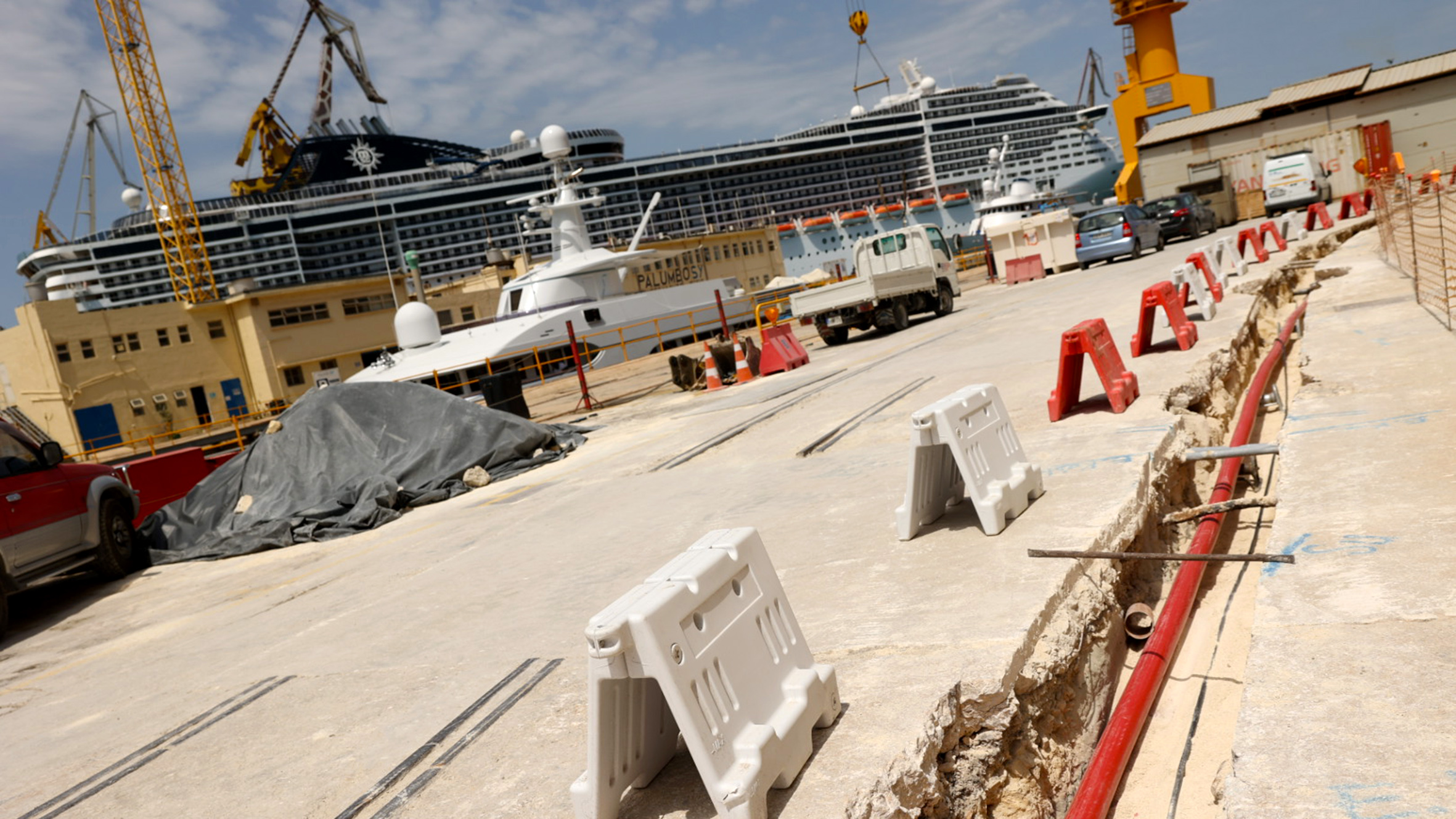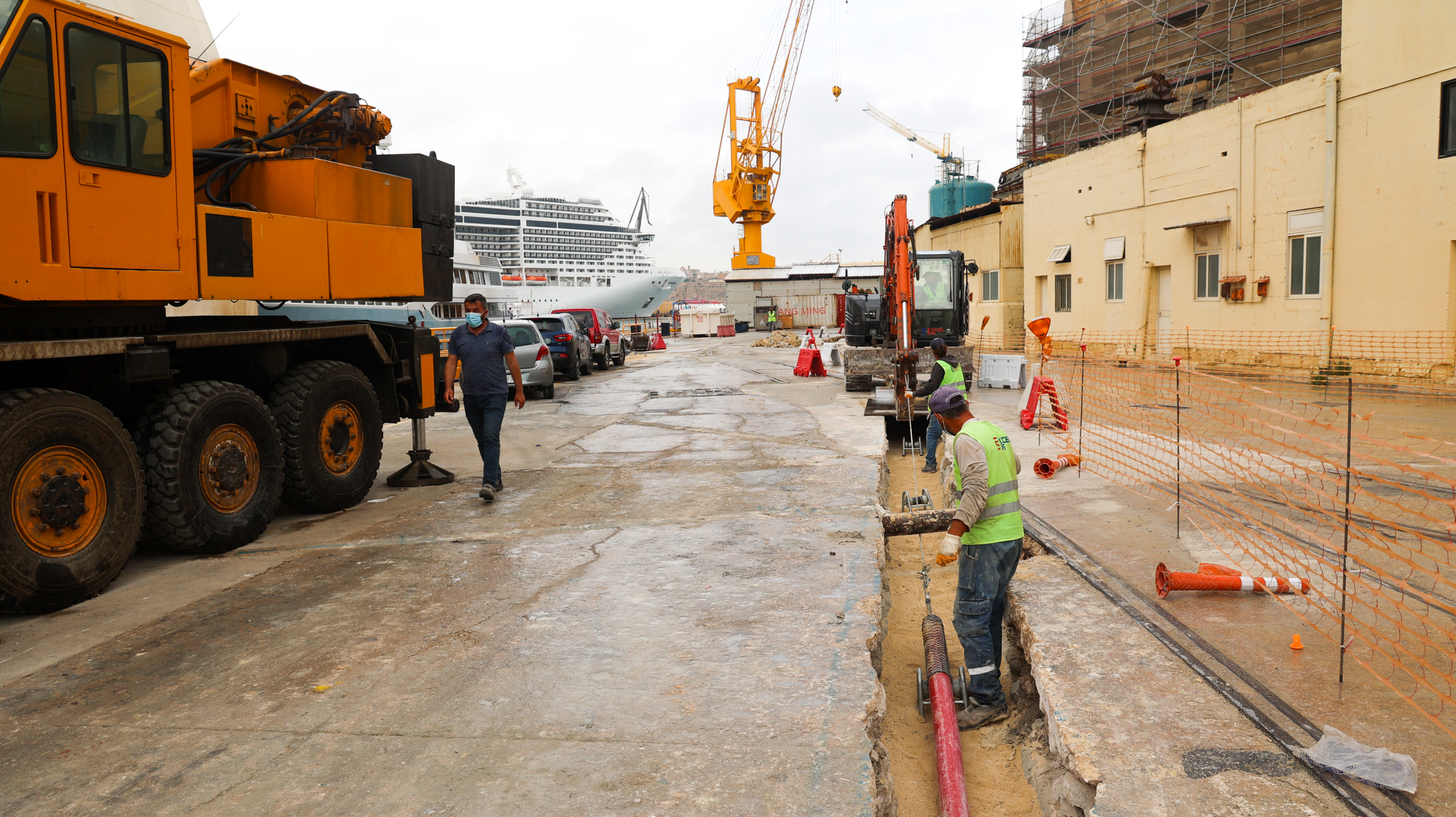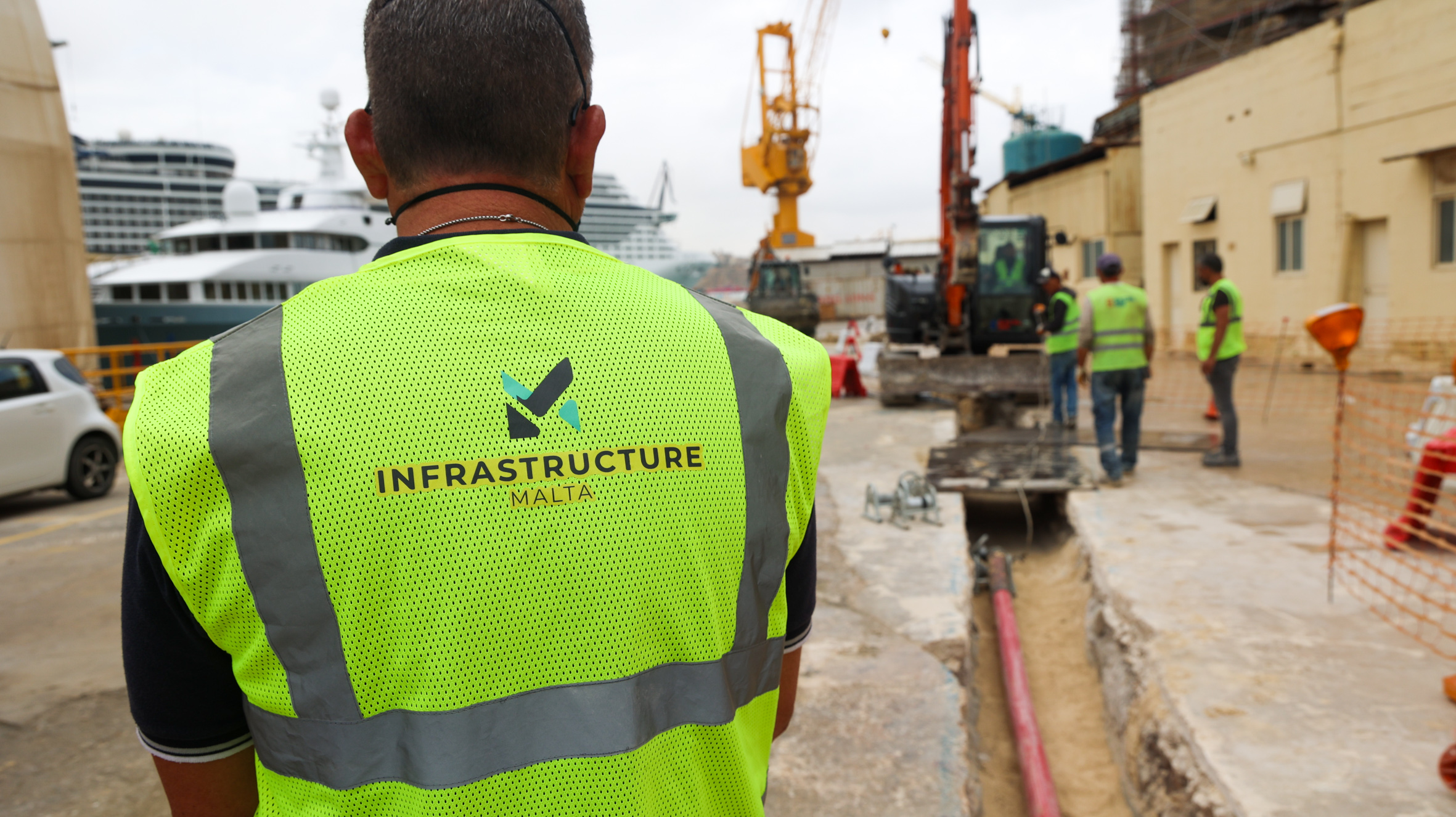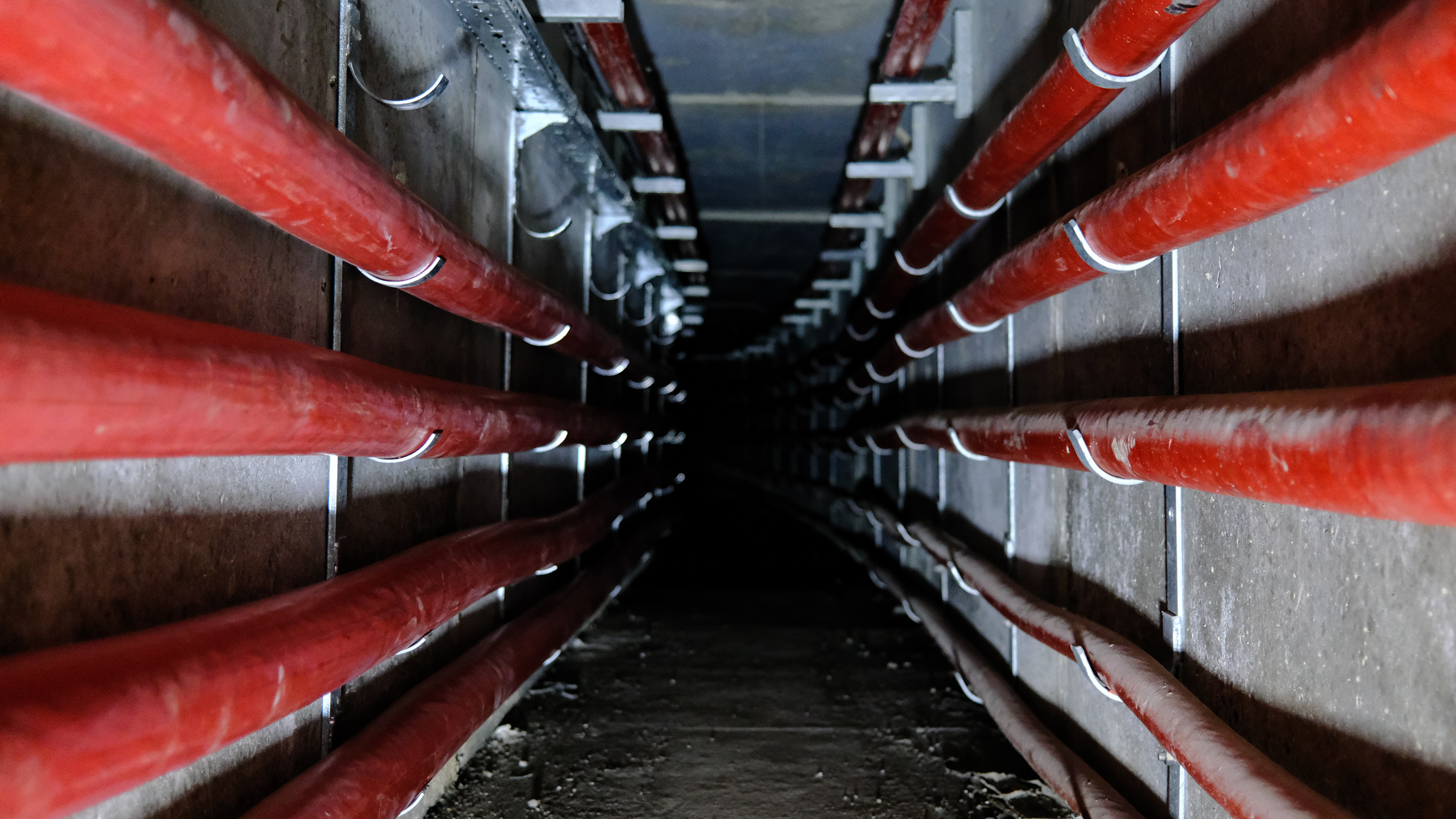
Extending shore-to-ship electricity to Palumbo shipyards
Infrastructure Malta is re-routing a section of the new high-voltage underground cable network that will introduce shoreside electricity in the Grand Harbour, so that it can eventually extend this green technology to the Palumbo Shipyards as well.
The agency has taken note of the appeals of Cottonera residents to equip the shipyards in Cospicua with shore-to-ship power and has modified this project to make sure that the new electricity network for this system can also cater for this ship repair facility’s largest dry dock, Dock 6, and Parlatorio Wharf next to it. This extension will continue to augment this investment’s environmental benefits in Cospicua and other localities in the Grand Harbour.
The Grand Harbour Clean Air Project (#GHCAP) includes the development of the electricity infrastructure for cruise liners and Ro-Ro cargo ships to switch off their gasoil- or heavy-fuel-oil-fired engines and plug in to shoreside electricity to power their onboard systems, whilst they are berthed at port. Through this €49.9 million investment, Infrastructure Malta is improving air quality for 17,000 families living in the Grand Harbour area by reducing more than 90% of the air pollution emitted by these vessels.
The laying of the underground electricity network that will distribute electricity to the Grand Harbour’s principal quays is advancing rapidly. Infrastructure Malta completed 36% of this network infrastructure.

Works on this project started late last year, soon after the European Commission included the GHCAP in a list of 140 transport infrastructure projects across Europe that will be co-financed through Connecting Europe Facility, the European Union's scheme for sustainable transport infrastructure.
The project contractors are excavating trenches in several locations along the Grand Harbour shoreline to lay the underground electricity cables that will distribute electricity from an existing Enemalta plc primary substation (distribution centre) in Jesuits Hill, Marsa to the Grand Harbour’s cruise liner quays in Floriana, Marsa and Senglea.
The first branch of this network is ready. It connects the existing Enemalta substation with the Deep Water Quay, where Infrastructure Malta is preparing to build one of the project’s two frequency converter stations. The project contractors are also constructing underground ducts for the 11-kilovolt cables which will distribute power from this station to the quays and the shore-to-ship connection points at Pinto Wharf, along the Valletta side of the Grand Harbour.
The second stretch of cables is directed towards Bridge Wharf and Church Wharf in Marsa. From here, submarine cables will extend the network to Coal Wharf in Corradino, Paola and to Boiler Wharf, in Senglea, on the other side of the Harbour. This branch of the network is now also incorporating the Palumbo Shipyards, where cable laying works are in progress this week.
Infrastructure Malta is spearheading discussions between the port authorities, the utilities involved and other stakeholders with a view to incorporating the installation of shore-to-ship connections at the Cospicua shipyards in the second phase of this project, which will introduce shoreside electricity to Laboratory Wharf and to Ras Hanzir (Fuel Wharf), in Paola, as well. At Ras Hanzir, Infrastructure Malta will be building a new 360-metre cargo handling facility in the coming years. These two locations will provide shoreside electricity to Ro-Ro ships as well.

Preliminary studies indicate that through the GHCAP, within 20 years Malta will save up to €375 million in costs linked to the measurable consequences of air pollution, such as impacts on health, the natural environment, infrastructure and agriculture. It will also reduce the impact of cruise liner noise and engine vibrations in the Grand Harbour area. These health and environmental benefits will make this project the second-largest contribution to improved air quality in Malta, following the decommissioning of heavy fuel oil power stations in Marsa and Marsaxlokk in 2017.
Through the first phase of this project, Infrastructure Malta will drastically reduce the emissions of cruise ships visiting Malta. By switching off their auxiliary engines, cruise liners will emit 93% less nitrogen oxides, 92.6% less particulate matter and 99.6% less sulphur dioxide. These pollutants are among the principal causes of respiratory illnesses and other health problems. The first phase of the GHCAP will also cut 39.6% of the cruise liners’ carbon dioxide emissions, which contribute to the climate emergency.
The European Union’s 2014 directive on the deployment of alternative fuels (2014/ 94/EU) stipulates that member states should prioritise the introduction of shore-side electricity supply in ports of the TEN-T Core Network, such as the Grand Harbour, by end 2025. Infrastructure Malta is planning to complete the first phase of the GHCAP by 2023.


